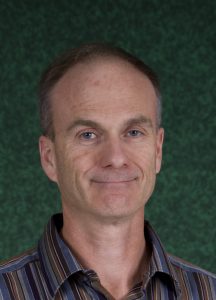We are happy to announce the upcoming seminar by Prof. R. Mark Bradley!
This hybrid event is co-organized by the Institute of Scientific Computing, the Dresden Center for Computational Materials Science (DCMS) and the Dresden Center for Intelligent Materials (DCIM).
 Nanoscale Self-Organization Induced by Ion Bombardment of Solid Surfaces
Nanoscale Self-Organization Induced by Ion Bombardment of Solid Surfaces
September 21, 2022, 09:00.
Z21 (Zellescher Weg 21), Room 250 (see TUD room navigator)
https://tu-dresden.zoom.us/j/65692884459?pwd=NlRaVDkzb3d5aXVGbWZvWkpOaXNkZz09
Meeting ID: 656 9288 4459, Passcode: !bxu5C2D
Abstract
Bombarding a solid surface with a broad ion beam can produce a remarkable variety of self-assembled nanoscale patterns, including ripples and hexagonal arrays of nanodots. The emergence of these patterns is not just fascinating – in the future, ion bombardment could prove to be an important tool in the fabrication of nanostructures.
The anisotropic Kuramoto-Sivashinsky (AKS) equation is commonly used to model nanoscale surface ripples produced by oblique-incidence ion bombardment. Intriguing phenomena are observed that are not reproduced by this model, however. Dispersive effects are not included in the AKS equation, but our simulations show that they can lead to the formation of raised and depressed triangular patches traversed by ripples. These patches bear a strong resemblance to nanostructures that are often observed in experiments. We have also introduced an equation of motion that differs from the AKS equation by the inclusion of a cubic nonlinearity. This additional nonlinear term results from an improved approximation to the sputter yield and can have a crucial influence on the dynamics – it can lead to the formation of a terraced topography, in accord with experimental observations for high ion incidence angles. The rapid variation in the slope at the edge of a terrace results from the formation of a non-classical shock that violates the Lax entropy condition.
Brief CV
R. Mark Bradley received his B.Sc. in physics and mathematics from the University of Toronto in 1979, and his doctorate in theoretical condensed matter physics from Stanford University in 1985. After postdoctoral work at the IBM T.J. Watson Research Center, he joined the faculty of the Department of Physics at Colorado State University in 1987, where he now holds the rank of professor and has a joint appointment in the Department of Mathematics. Bradley is the author of 120 refereed publications, one of which has been cited over 1,200 times. His research on nanoscale patterns produced by ion bombardment of solids is supported by the U.S. National Science Foundation.



